Breezer Inversion Team: Checkpoint- by Grannygear
Now that I had the Breezer Inversion Team out of the box and had gotten it weighed and photographed, it was time to get it to fit me. This bike came out of the early demo fleet, so it is not a surprise that it came with a stem that is out of spec. It was a 120mm stem (OE spec is 110mm) and that, along with a bar with a fair amount of reach to it, meant I was way stretched out. I gave it a try and not only was it preventing me from getting my weight back where I would want it for a dirt descent, it also steered a bit oddly, in my opinion. This is a fairly slack head tube angle for a long stem to feel right.
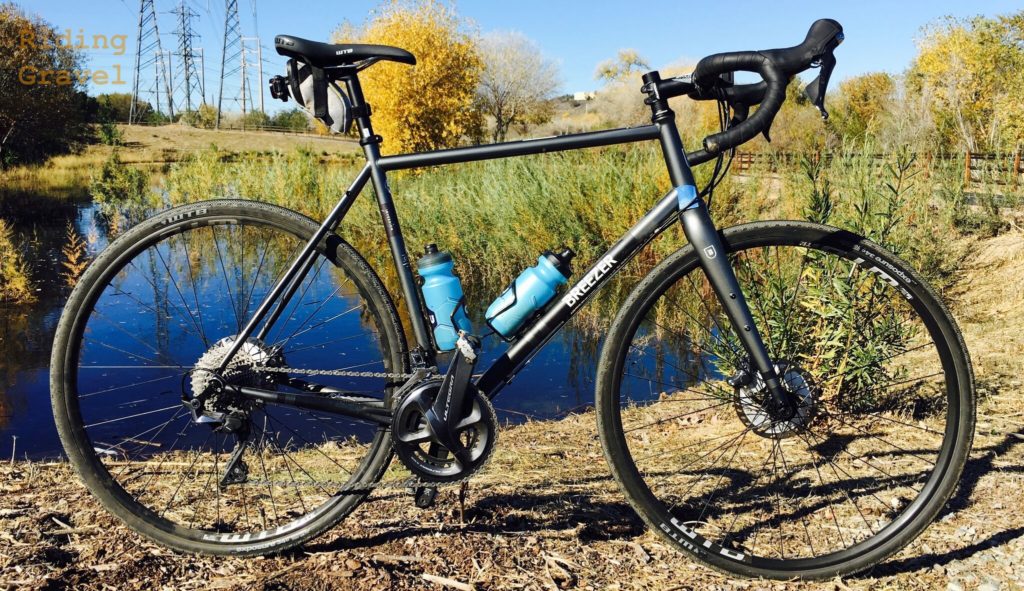
A tape measure showed that it was 2 inches longer from the back of the saddle to the back of the control hoods as compared to my own gravel bike. The numbers are pretty close between the two frames, so most of the difference was in the touch points, stem and bar, along with the difference between Shimano and SRAM and the shapes of the hoods.
A 90mm stem brought it pretty much to where I wanted it and it also steered better, at least what I call better. Your mileage may vary. That done, I pedaled out a bit to see how it felt. I immediately fell in love with that steel feeling again. Yep. Very nice. The pedaling response was snappy and smooth, belying the 23 pounds+ I was dealing with.
I also noticed the rather narrow version (135mm) of the WTB Volt saddle that they had on here and the 175mm crank. I ride a 172.5mm crank and going from one to another is apparent. My legs are not that long for my height, so I find 172.5 is easier to spin all day and less fatiguing.
I set out for the introductory ride, just a cruise around the area to bed things in and make sure it all does what it is supposed to do. This bike is a smoothie. I was pleased to see the front end of the Breezer Inversion Team is not overbuilt to the extent many gravel type bikes are. Despite having a carbon fork, I can see and feel the give in the front end as I bounce on the bars with my weight over the front. I can also see the fork tuck in just a bit as I brake hard, so we shall see if that leads to any chattering or fluttering of the fork ends. Despite having budget- conscious wheels including tubes in there, the Breezer feels very eager to ‘go’ when you step on it. Steel done well is lovely, really, and my first impressions are of just that.
The WTB 34mm Exposure tires roll pretty well with 40 psi in them. Honestly it feels like a slightly slow road bike with off road privileges. Turning onto a dirt and gravel road, I am still pretty impressed with how well the bike rides. I have gotten quite used to my suspension stem so I was expecting a glaring difference, and yes, it certainly was rougher, but not bad considering that is only a 34mm tire on there. As well, this frame has a longer seat tube on it than my Lynskey does and that extra ’stick out’ on the Ti frame, when combined with a Ti seat post, is really a nice buffer for impacts up through the saddle. Again, the Breezer was anything but harsh despite less exposed seat post.
Back in the garage I grabbed the wheels off my Lynskey and stuffed them in the Breezer. The wheels are the Rolf-Primas that IIRC are 22mm internal and are shod with the 42mm (43mms actually) WTB Resolutes. The fork had lots of room. No issue there. The rear was very close at the chain stays. Discussing this with the Breezer folks, they had some goals in mind regarding what size tire it would accept yet balancing that out with tubing shapes and frame design restraints. That means no big time squishing/squashing/denting of the stays to make more room as that leads to less bottom bracket stiffness, and no machined yokes or welded in plates (like on my Lynskey) that can steal ride quality and lead to uneven stresses in the frame under load (and then premature failure). They also wanted relatively short stays (425mm) to keep the bike feeling agile and responsive. A typical gravel bike that is more adventure focused will be more in the 430mm-435mm range. However the spec for the Inversion Team calls out clearance for a 700cx45 tire. Hmmm.
Well, OK. Maybe. I guess. But with the 43mm wide Resolutes I had just less than 5mm room on the non drive side and 2.5mm or so on the drive side. That is pretty close. Of course, the tire design, tread, and rim width/design all add up to make the final tire width number in real time, but I would not run anything wider than a 40mm tire on this unless I never planned on getting into mud.
While I was at it I grabbed a set of 650B x 47mm (WTB Horizons) and slipped them in there. There was a bit more room but only by a millimeter or so. Basically 2-3mm on the drive side and 5mm on the non drive side stay. I do plan on running this bike with the 650B x 47mm tires at some point.
Another thing to note, and this is a bane to all duck footed pedalers out there: How wide is your rear end? I mean to say, at the rear end of your disc brake equipped, thru axle gravel bike…how wide is it? I measured the width across the 142 x 12mm ready stays of the Breezer right in front of the flat mount caliper, about where your heel would be as you spin the crank along. It was a couple of millimeters narrower than my 148×12, boost equipped, carbon mountain bike. Really? Now consider that bikes like this Breezer are spec’d with road cranks with a narrower ‘Q’ factor than any boost 1x MTB crank has and you have a recipe for clipping the frame with your heel if you pedal ‘heels in’. I do. And consequently I do. Hit them, I mean, unless I am paying attention. It’s a fine line and something that needs to be addressed as designers struggle to ‘get it all in there’ and still have all the new standards work with the human body. I noted this on my Lynskey GR250 review and the next year they re-worked the back end to slim it down.
The gearing on the Inversion Team is pretty standard road stuff up front but with a reasonably deep cassette. The compact 50/34 crank (I mean, what else does Shimano offer? Well how about 46/36 but that takes too much imagination) is, in my thinking, pretty useless for a gravel adventure bike, at least for where I live. The 50×11 gear is silly tall for most folks in the dirt and means you need to run at the top area of the cassette or take that big drop to the 34T if you are in the dirt much. But Breezer pairs this with an 11-34 cassette, so at least we getting to a 1:1 low. That is pretty good for most folks in most places. But, I do not see this bike as a heavy gravel steed, and in a lighter approach, say this All Road deal, then a 50/34 is actually not bad at all. We shall see.
The RX version of the Ultegra rear derailleur feels little different to me shifting wise with the clutch on or off. I also had an 11-36 cassette on the Rolf-Primas when I was tire clearance checking and the set up shifted fine, although I would have needed to trim the B tension screw a bit if I was going to run this way. Yeah, Shimano spank, but hey, if they are not going to give us proper gravel/adventure gearing then we can jump out of the box they like to keep us pedaling in.
For now, I am rolling this ferrous framed beauty down the road and will report back as we wrap up our testing. One side affect to all this…it has me looking at steel road bike frames again.
Sigh. It never ends.
NOTE: Breezer Bikes sent over the Inversion Team at no cost to Riding Gravel for test and review. We were not paid, nor bribed, for this review and we always strive to give our honest thoughts and opinions throughout.
________________________________________________________________________
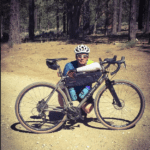
_____________________________________________________________________________


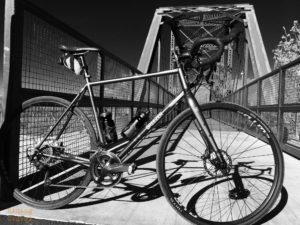
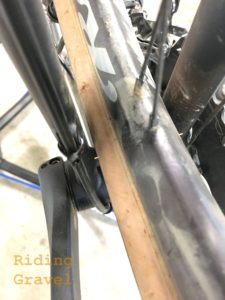
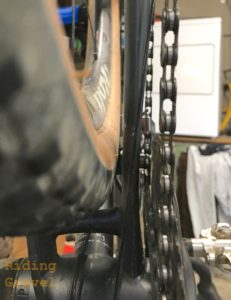

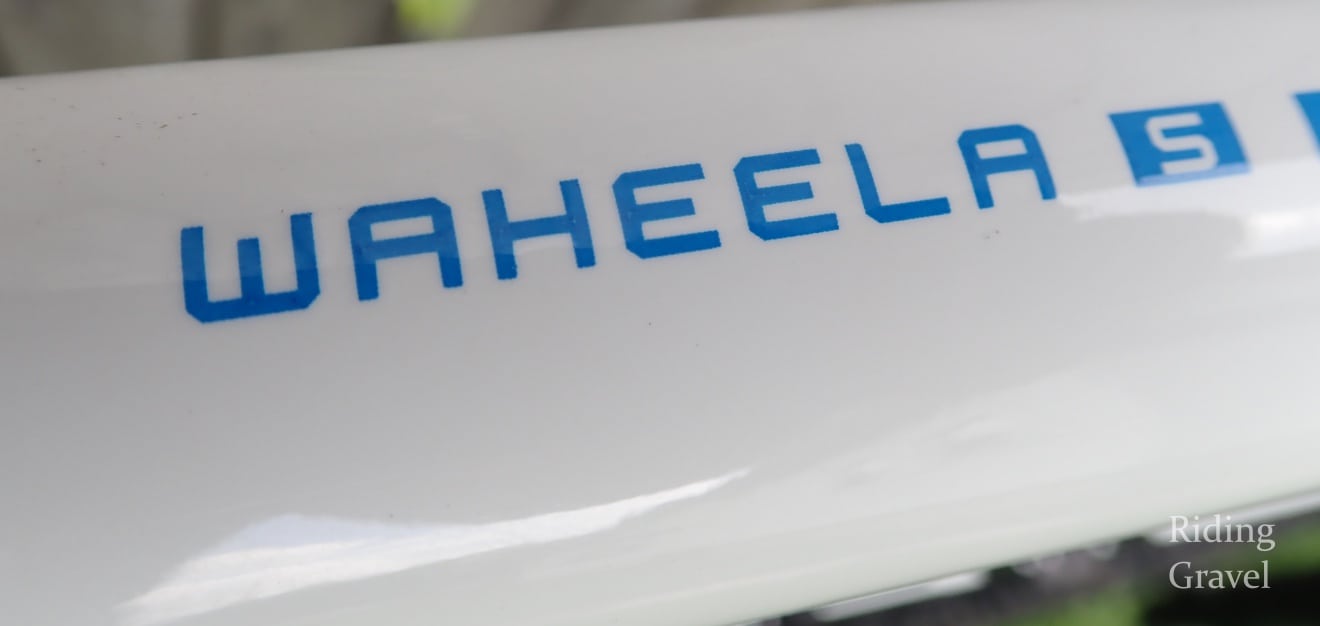
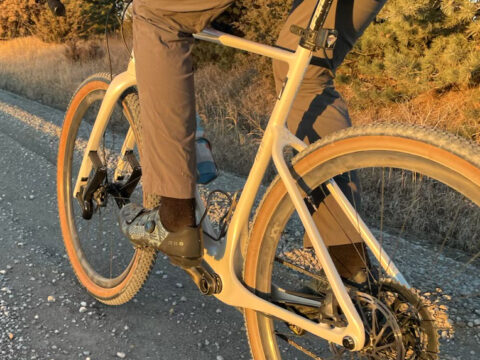






Great write up, always appreciate the viewpoints of both you (Grannygear) and Guitar Ted along with other contributors. Everyone gives a more real world insight such as the clearance issues and potential heel strike? with the rear end. Would hope Breezer would listen to the people and make small changes although guess there may be issues going forward for them and others with parent company having filed Bankruptcy?
This then brings another question? wonder what the thoughts of everyone are about Breezer, Fuji and other brands totally disappearing because of the bankruptcy, understanding others might buy the various assets, it still seems to be a big unknown for the brands. It would be sad to see legacy? brands like Fuji and Breezer disappear from the bicycling world.
@james- Thanks for the kind words. Regarding the “bankruptcy” issues: It’s hard to see what the outcome might be. Of course, one can speculate……
My feelings are that these brands have too much marketing equity to just disappear. Now with that said, it’s anyone’s guess now how their legacy after a sale might be handled. You could have a situation where, not unlike GT, Mongoose, and Schwinn, where the names live on but the merchandise is completely different, and therefore not representative of what those brands may have been in the past.
These are troubling times and changes are always painful to go through/watch when it comes to things like this. We will be watching with great interest, as many of you will be, to see just what falls out in the end. My feeling is that there will be a few surprises along the way……
Thanks for the great writeup and photos, GuitarTed. I test-rode a Breezer Inversion and I really liked the liveliness. I also noticed some issues with my heels hitting the chainstays though, particularly when pedaling backwards (admittedly not too common). By most metrics this bike is a perfect fit for my needs, but the heel strike worries me. I come from a skinny tubed, ancient road bike. Do you see this as a minor annoyance that’s likely in most modern gravel frames? Or more of a deal-breaker for the Inversion?
Related, can a “pedal extender” fix this problem? (https://www.amazon.com/Sunlite-Pedal-Extenders-21mm-Long/dp/B0037NAC9G/)
@fishtix- Thanks for the kind words. Heel strike can be an issue if you like a fair degree of float in your pedal system, and may become even a bigger deal with flat pedals if you decide to use those. If you generally miss the stays, most likely it will never become an issue on a particular bike. Of course, without seeing your specific situation, I cannot make that call for you.
In general I don’t see this as a big issue for gravel bikes. Have I seen it on other brands? Certainly. Grannygear, who does many of the posts here, has also had issues with heel strike on certain bikes. So, it can be a problem. I don’t think it is endemic of the breed, so to say, because many bikes are just fine in this regard and can handle quite large tires.
Where heel strike issues arise, it generally is a situation where there hasn’t been enough massaging of the frame stays, or an issue where it is a drop bar bike based on a road drive train and that limits the ways in which the frame can be made to allow for both big tires and heel clearances, amongst other issues. Probably a combination of both things in most cases.
We are stuck in a mold where frames and drive train components are based on two primary usages- MTB and Road. This “mixed terrain”, gravel, backroad, “all road” thing has thrown a wrench in the works in that designers and engineers are blending elements of MTB and Road, forcing these issues which include heel clearance. Back in the day, things like bottom bracket length and chain line were adjustable, now they are fixed. Maybe we will see a return to things of that nature to accommodate today’s changing needs for bicycles.